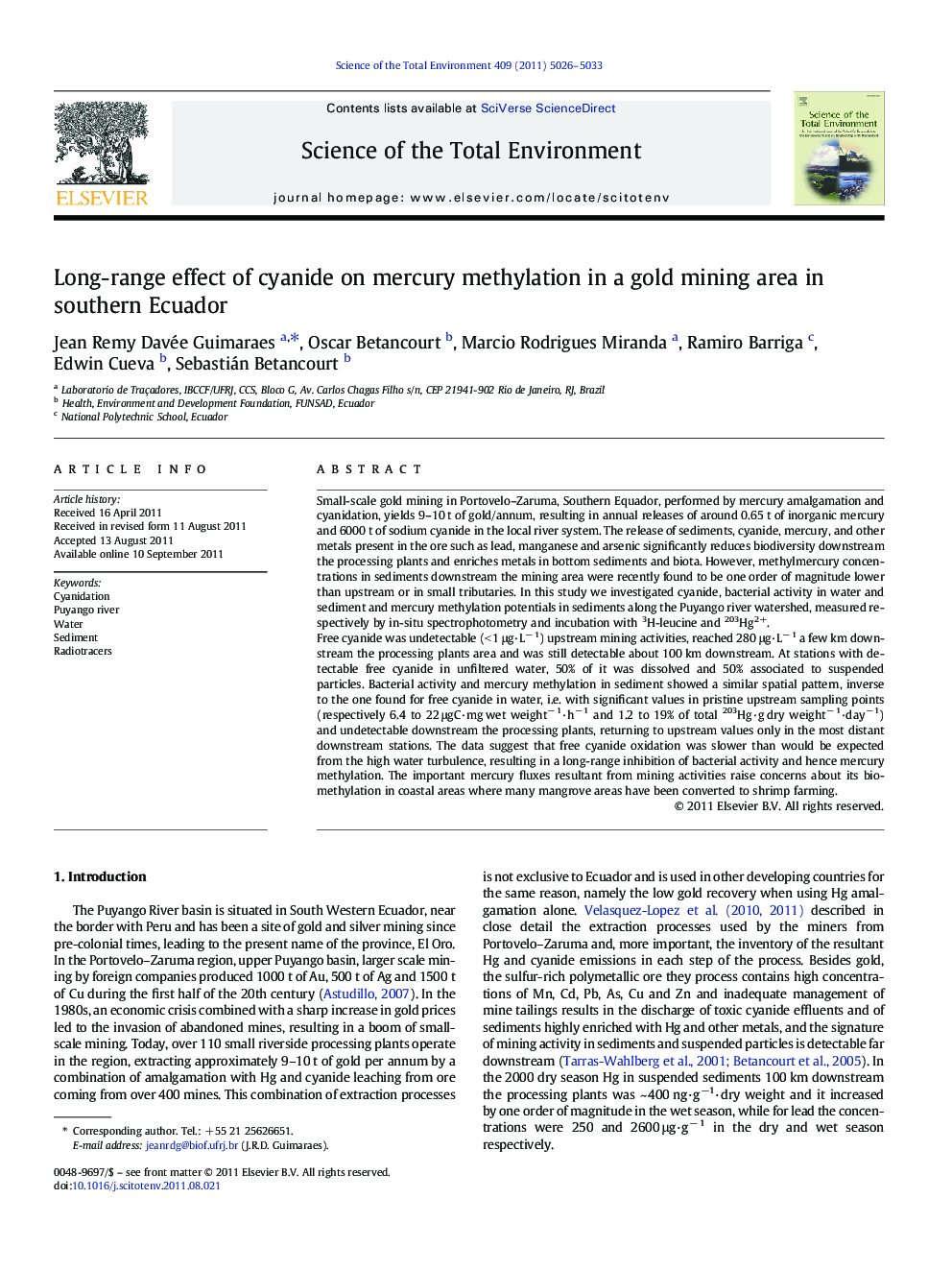| کد مقاله | کد نشریه | سال انتشار | مقاله انگلیسی | نسخه تمام متن |
|---|---|---|---|---|
| 4430177 | 1619839 | 2011 | 8 صفحه PDF | دانلود رایگان |

Small-scale gold mining in Portovelo–Zaruma, Southern Equador, performed by mercury amalgamation and cyanidation, yields 9–10 t of gold/annum, resulting in annual releases of around 0.65 t of inorganic mercury and 6000 t of sodium cyanide in the local river system. The release of sediments, cyanide, mercury, and other metals present in the ore such as lead, manganese and arsenic significantly reduces biodiversity downstream the processing plants and enriches metals in bottom sediments and biota. However, methylmercury concentrations in sediments downstream the mining area were recently found to be one order of magnitude lower than upstream or in small tributaries. In this study we investigated cyanide, bacterial activity in water and sediment and mercury methylation potentials in sediments along the Puyango river watershed, measured respectively by in-situ spectrophotometry and incubation with 3H-leucine and 203Hg2+.Free cyanide was undetectable (< 1 μg·L− 1) upstream mining activities, reached 280 μg·L− 1 a few km downstream the processing plants area and was still detectable about 100 km downstream. At stations with detectable free cyanide in unfiltered water, 50% of it was dissolved and 50% associated to suspended particles. Bacterial activity and mercury methylation in sediment showed a similar spatial pattern, inverse to the one found for free cyanide in water, i.e. with significant values in pristine upstream sampling points (respectively 6.4 to 22 μgC·mg wet weight− 1·h− 1 and 1.2 to 19% of total 203Hg·g dry weight− 1·day− 1) and undetectable downstream the processing plants, returning to upstream values only in the most distant downstream stations. The data suggest that free cyanide oxidation was slower than would be expected from the high water turbulence, resulting in a long-range inhibition of bacterial activity and hence mercury methylation. The important mercury fluxes resultant from mining activities raise concerns about its biomethylation in coastal areas where many mangrove areas have been converted to shrimp farming.
► Polymetallic and S-rich ore is processed for gold by amalgamation and cyanidation.
► But very low MeHg concentrations are found downstream processing plants.
► Cyanide strongly depressed bacterial activity and mercury methylation along a ~ 50 km river stretch.
► Risk for coastal plain: cyanide disappears from ~ 110 km on, while Hg does not.
Journal: Science of The Total Environment - Volume 409, Issue 23, 1 November 2011, Pages 5026–5033